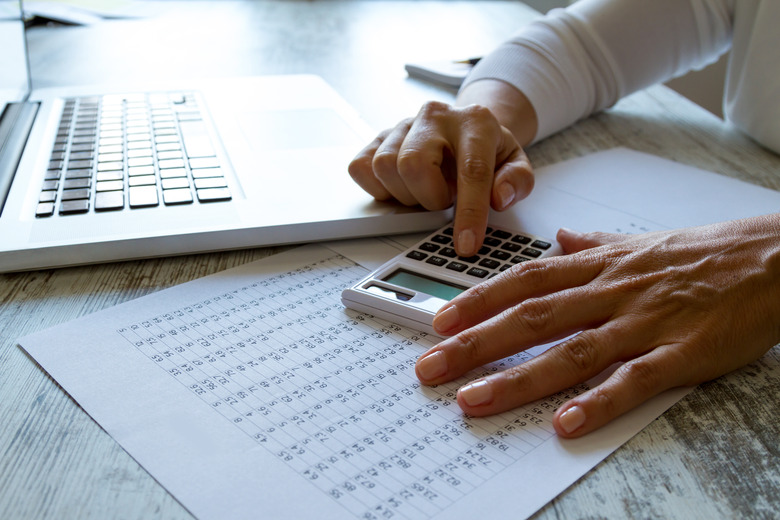How To Average Two Percentages
You live in a world increasingly driven by data and numbers. Companies and governments use data collected online for many purposes, such as figuring out the percentage of visitors to a site that click on a specific link or the average number of unique visitors to the site each month.
Sometimes, you might need to average different percentages (or in theory work the other way around). Is finding the average of two percentages as straightforward as finding the average of any two numbers? In fact, only under certain conditions is this true. Read on to unravel the rest of this arithmetic mystery.
What Is a Percentage?
What Is a Percentage?
"Per cent" comes from the Latin for "for each one hundred," and "percentage" is a noun form of this expression. ("Percent" means the same thing.) It is normally, though not always, used as an alternative way of expressing a decimal number between 0 and 100. This is done by multiplying the number by 100 and adding either "%" (in most formal scientific writing) or "percent."
0.737 and 73.7 percent thus refer to the same thing. But in your mind, the latter term most likely conveys the mathematical message of "just under three-fourths" far better than the decimal version does.
What Is an Average?
What Is an Average?
Mathematically, an average is just the sum of the individual data points (heights, speeds, etc.) divided by the number of points in the set. An average can be conceived of as the most likely number to emerge randomly from an existing set of related numbers, such as quiz scores.
For example, if five students take a 100-question quiz and their scores are 71, 79, 84, 88 and 93, the group average is 415/5 = 83.0. Thus, if you knew a student had taken this quiz but had no further information, intuition would suggest that this student's score is more likely to be 80 than 60, 70 or 100.
Common Uses of Percentages
Common Uses of Percentages
As you might guess, percentages are often used when a number is used to convey odds, ratios or chances rather than strict totals. You might be interested in, for example, the percentage of days it rains in April in a given location if you're planning a vacation there, or the percentage of total shots a basketball player makes.
Common Uses of Averages
Common Uses of Averages
Averages are similar to percentages in that they offer a sense of likelihood, but the information is presented differently. Whereas you might observe that it rained on 67 percent of days in your town last April, you might also want to know the average amount of rainfall in April there over the past 50 years.
Averages tend to reflect information that changes more slowly than percentages, as the latter numbers are often a "snapshot" of a given story or event, while averages may be used in a more predictive or analytical way.
Average Percentage Calculator: Same Totals
Average Percentage Calculator: Same Totals
If every point in a data set of percentages refers to the same event, such as a quiz, and each point is divided by the same number, averaging the raw percentages gives an average percentage, as with other numbers. So, because the five students in the example above each took a 100-question test, the average percent correct is the same as the average, but is written 83.0% or 83.0 percent.
Average Percentage Calculator: Different Totals
Average Percentage Calculator: Different Totals
Now consider a situation where you have five quiz scores, but the quizzes are not all the same, and the number of questions therefore varies. If you have raw scores of 16/25, 23/25, 35/50, 44/50 and 66/75, averaging the associated percentages gives (64.0 + 92.0 + 70.0 + 88.0 + 88.0)/5 = 80.4 percent.
To gain a more accurate sense of the students' performances, you need to find a weighted average, which takes into account the variation in question totals. To do this, simply add the total number of correct answers by the total number of questions and convert to a percentage: (184/225) = 81.8 percent.
Cite This Article
MLA
Beck, Kevin. "How To Average Two Percentages" sciencing.com, https://www.sciencing.com/average-two-percentages-8429952/. 1 February 2020.
APA
Beck, Kevin. (2020, February 1). How To Average Two Percentages. sciencing.com. Retrieved from https://www.sciencing.com/average-two-percentages-8429952/
Chicago
Beck, Kevin. How To Average Two Percentages last modified March 24, 2022. https://www.sciencing.com/average-two-percentages-8429952/
